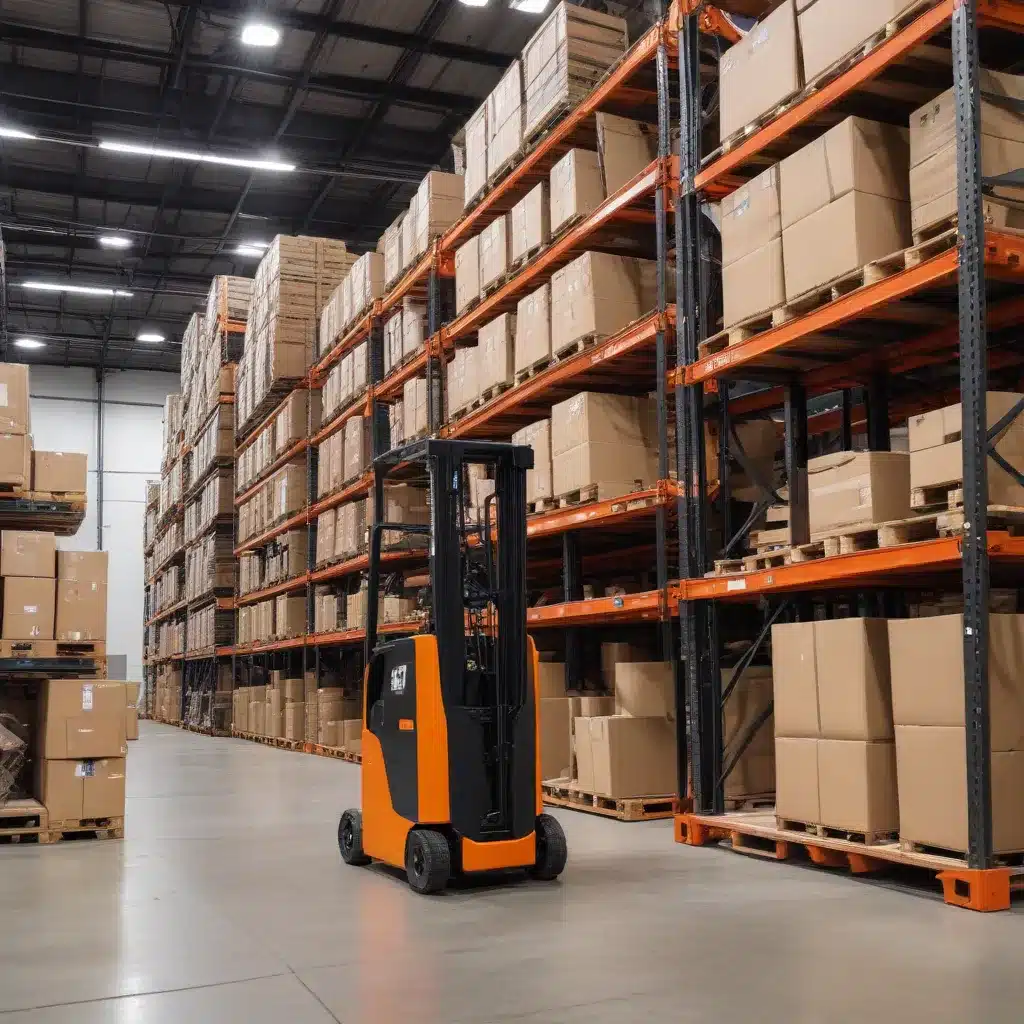
The Warehouse Automation Revolution
The world of warehousing and logistics is undergoing a remarkable transformation, driven by the rapid advancements in autonomous forklift technology. As the industry grapples with labor shortages, changing workforce dynamics, and the relentless pursuit of operational efficiency, autonomous forklifts are emerging as the game-changing solution that is poised to reshape the future of warehouse automation.
In the past, warehouse automation was often viewed as a luxury reserved for early adopters and large-scale enterprises. However, the landscape is changing rapidly, and autonomous forklifts are no longer a futuristic concept, but a practical and accessible reality for warehouses of all sizes. Josip Cesic, CEO and Co-Founder of Gideon, highlights the driving forces behind this trend, noting that “AI and robotics are revolutionizing supply chain operations, particularly in the realm of autonomous forklifts.”
The Benefits of Autonomous Forklifts
The adoption of autonomous forklifts in warehouses is not just a technological advancement; it’s a strategic move that delivers a wide range of tangible benefits to businesses. Walmart, a pioneer in warehouse automation, has been leading the charge, investing in autonomous forklift systems and witnessing the transformative impact on their operations.
Maurice Gray, the General Manager of Walmart Distribution Center 6020, succinctly sums up the value proposition: “Automation isn’t just good for business – it’s good for our associates too.” The integration of autonomous forklifts has empowered Walmart’s associates, enabling them to transition from manual labor to become “conductors” who oversee the efficient operation of the robotic systems.
This shift in responsibilities not only enhances the productivity of the warehouse but also provides opportunities for upskilling and career growth for Walmart’s employees. As Jose Molina, a 26-year Walmart associate, attests, the autonomous forklifts have allowed him to “build our business, increase our DC’s productivity, and save his lower back” – a win-win scenario for both the company and its workforce.
Driving Efficiency and Safety with Autonomous Forklifts
The benefits of autonomous forklifts go beyond enhancing workforce engagement. These advanced systems are designed to drive significant improvements in operational efficiency and safety within warehouse environments.
Third Wave Automation, a pioneering provider of autonomous high-reach forklifts, has developed its “Shared Autonomy Platform” to seamlessly blend AI-powered autonomy with human expertise. Their TWA Reach line of forklifts can operate in four modes: fully autonomous, remote assist, remote operation, and traditional manual operation, offering unparalleled flexibility and adaptability.
“Third Wave Automation’s approach of blending AI-powered autonomy with human expertise is transforming warehouse operations,” explains Prashant Bothra, Principal at Woven Capital, Toyota’s growth fund. “Their solution provides reliable automation for vertical movement and placement of goods while optimizing labor efficiency, enhancing safety, and enabling data-driven improvements.”
The advanced technology powering these autonomous forklifts includes cutting-edge mapping solutions, industry-leading autonomous obstacle detection systems, and a comprehensive Fleet Management System that enables a single operator to manage multiple forklifts. These capabilities not only boost productivity but also significantly enhance safety within the warehouse environment, a critical concern in an industry often plagued by forklift-related accidents and injuries.
The Warehouse of the Future: Where Sci-Fi Meets Supply Chain
As the warehouse automation revolution gains momentum, the vision of the “smart warehouse” is no longer a distant fantasy, but a tangible reality that is rapidly taking shape. Leading retailers and logistics providers are already embracing the transformative potential of AI-driven systems, paving the way for a future where autonomous forklifts, drones, and other cutting-edge technologies seamlessly integrate to create a highly efficient, safe, and data-driven supply chain.
Ashish Kumar, Assistant Vice President of Operations at Chetu, a global software solutions provider, envisions a future where “Robots like R2D2 are doing the heavy lifting, working with humans, while drones fly back and forth, all powered by Artificial Intelligence.” This vision is already being realized, with companies like Amazon, Walmart, and Alibaba leading the charge in deploying AI-powered robotic systems to streamline their warehouse operations.
While the implementation of these advanced technologies comes with its own set of challenges, such as high initial costs, integration complexities, and the need for upskilling the workforce, the potential benefits far outweigh the obstacles. As Kumar rightly points out, “Technology may not be able to solve all the problems, but it should impact warehouse operations, as did the advent of modern pallets around 1917 and the lift truck, which eventually became the forklift.”
The Future of Warehouse Automation is Here
The future of warehouse automation is no longer a distant vision – it is here, unfolding before our eyes. As the industry grapples with labor shortages, changing workforce dynamics, and the relentless pursuit of operational efficiency, autonomous forklifts are emerging as the transformative solution that is redefining the landscape of logistics and distribution.
From Walmart’s innovative integration of autonomous forklifts to the game-changing Shared Autonomy Platform developed by Third Wave Automation, the warehouse automation revolution is well underway. By seamlessly blending AI-powered autonomy with human expertise, these advanced systems are driving unprecedented improvements in productivity, safety, and data-driven decision-making.
As we look ahead, the potential for “smart” warehouses is vast, with emerging technologies like drones, Augmented Reality, and blockchain poised to further revolutionize the supply chain. The future of warehousing is being built today, and the warehouse of the future, where sci-fi and supply chain converge, is no longer a distant dream – it is a reality that is rapidly transforming the industry.

